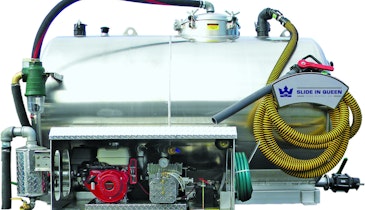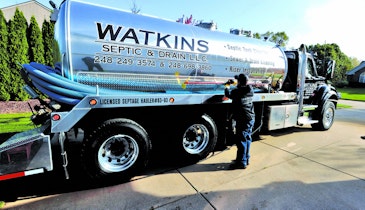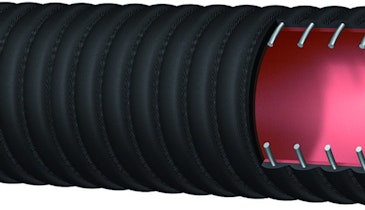The labor market has loosened up considerably in the past year with the economic recession. Though this particular facet of the downturn may translate into an easing of the long-term labor shortage in our industry, quantity doesn’t necessarily translate into quality. So there’s always the challenge of finding the best employees, bringing them on board, and keeping them in the fold. Three pumpers talk here about what they do to attract and hold onto the people who are the lifeblood of their profitability.
When Daphne and Gary Blankenship bought Able Septic Tank Service, the 44-year-old business was a healthy, going concern. From this strong beginning, they’ve valued their employees as a significant part of their success.
“We don’t have big employee turnover,” says Daphne Blankenship. “We have some who have been with us for years, even in other businesses. And this is a steady job, so we’re beginning to see more calls from people looking for work. But the employees we already have are like family to us. Some are closer than family, and we depend on them for our livelihood.”
She knows their employees also rely on Able for their livelihoods, and she stresses this interdependence when talking with them. She believes the acknowledgment stirs feelings of responsibility and pride. “They know that what they do affects whether we get more work and they still have jobs.” And she believes this family-like atmosphere she and her husband foster really makes a difference in employee retention.
“They want to work with us. We’re family-owned, and know what it is to have family. So if they have any personal emergencies, we’re right there to help, and we’re flexible about their availability.”
The flexibility and understanding goes a long way for this business that doesn’t offer a lot of employee benefits. If Able could offer more benefits, Blankenship says health insurance would likely be the most desired component. But she says that on-the-job training, provided uniforms and generous pay seem to be enough for now.
Recruitment and retention of employees is all about making the work experience pleasant and satisfying, says Wastewater Control Inc. owner Chip Taylor. Located just outside Jackson, Miss., the small company depends heavily on its employees’ attitudes and productivity, so Taylor makes sure they’re happy.
“The most important thing is to pay them as best we can, treat them fairly and give them the best tools to work with,” he says. “We provide them with uniforms to build team spirit and give them good trucks to run. All our trucks are fully lettered and these things are very helpful in making them proud to be part of our company. I’m not saying they have to have the best of everything, but if you make sure they have what they need to do the job you’re asking them to do, you’re going to have a happier employee.”
He says his workers ask about health insurance, which he can’t furnish at this time. “We offer benefits, but not that. But we do compensate them enough that they can go out and pay for it on their own if they really want to.”
Recruiting and retaining employees is a bit of a different challenge for Roy Kongsjord. Though he started his construction firm back in 1967, he’s only been in the septic pumping business for three years. Located between Bemidji and Hibbing in Minnesota’s Arrowhead Region, Kongsjord learned to be versatile in the services he offers his rural customers. His heavy construction services include road building, general excavation and even logging.
He began pumping septic tanks after realizing he was leaving money on the table by installing but not offering to service them. It also made sense to do the work himself rather than kill the clock on a job, waiting for the septic pumper to show up and empty a tank slated for demolition. Septic pumping has added a dependable channel to his revenue stream.
The diversification, however, can make it a real challenge to find and keep good workers. “We’re seasonal, so it can be really tough,” he says. Along with making sure his employees are generously compensated for the physically demanding work, he’s always looking for a new hook that will reel in and hold dependable labor. “What appears to be our best asset so far is that, after three months, we match funds with whatever they’ve put into their retirement account. They really like that little bonus.”
Another helpful tactic is Kongsjord’s willingness to open his mind to relatively untapped labor pools. “We try to work the retired sector a little bit. All these guys that have retired at 55 or 60, some of them aren’t really ready to be retired yet. We find that if you give them six months of work, that’s just what they’re looking for.”
He’s tried trolling for younger employees such as college students, but it hasn’t worked out well. “The younger guys these days, they just don’t know a thing about our kind of work,” he laments. “It’s sad. But we’ve had really good luck with the retirees, and they come back every year. Three or four of these guys even show up at our Christmas party.”
It appears that employee retention strategies are as varied as pumping firms themselves, limited only by the interest and creativity of management.





